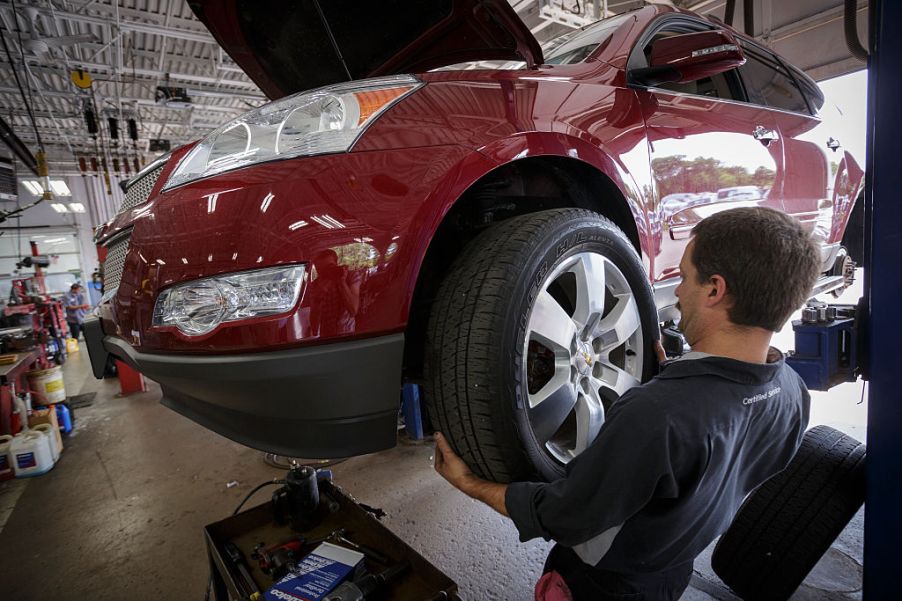
How Often You Should Really Rotate Your Tires
Tires are one of the most important and ignored parts of a car. Properly maintained wheels keep your vehicle safe and performing well. Most drivers know regular rotations prolong the life of a set of tires, but how often should you rotate your tires? And why does it matter? Here’s how to properly care for your tires so they can take care of you.
How often should you rotate your tires
When you take your vehicle to the mechanic to rotate the tires, each wheel is taken off the vehicle and moved to a different spot on the car. According to Michelin, tires are rotated to ensure they last longer, wear evenly, and keep you safe. Though every vehicle and tire type is different, many experts recommend tires be rotated at least every six months or every 6,000 to 8,000 miles.
If you drive your vehicle a lot, you may need to get your tires rotated every time you need an oil change or every 3,000 to 5,000 miles. This time frame can vary, depending on whether your car is front-, rear-, or all-wheel drive. According to Car and Driver, tires will wear at different rates for various models. Proper rotation may also rely heavily on the type of tire, especially when it comes to vehicles with varying tire sizes at the front and rear.
Your vehicle’s owner’s manual should offer guidance on rotating your tires, as well as the rotation frequency and pattern of your vehicle. This can help you better understand how your tires wear and how often you need to rotate them. When in doubt, seek the advice of a professional.
The importance of rotating your tires
Rotating your tires is a task that should never be ignored. According to Consumer Reports, “Well-maintained tires will help you travel safely for tens of thousands of miles.” Without the proper rotation, your tires may not wear evenly, which can hinder your car’s performance and safety.
Your vehicle’s front tires are largely responsible for braking, which makes wheel quality even more important. If your tires are overly-worn or not evenly worn, your vehicle cannot do its job properly. Especially in the case of a front-wheel-drive car, which grips for traction, working to maintain even wear patterns can impact braking, overall ride, noise, and longevity.
In addition to maintaining your vehicle’s performance, rotating your tires can also have more practical value. For instance, if your tires come with a warranty, its maker may require regular maintenance to enforce the warranty. This requirement would include regular tire rotations.
What’s involved in a tire rotation
Tire rotation also provides an opportunity for a mechanic to inspect your tires, access any damage, and even inflate them. Depending on the car, as well as its drivetrain, a mechanic will move your tires to different positions.
The most standard rotation, according to U.S. News, involves moving the front tires to the rear and the rear tires to the front. But there are a variety of rotation patterns, which makes seeking professional help necessary. During your vehicle’s inspection, the mechanic will also check for inflation rates and problems like blistering or cupping on your tires.


